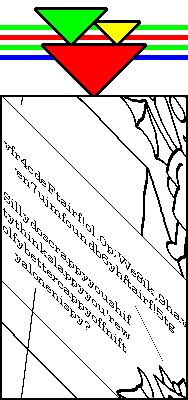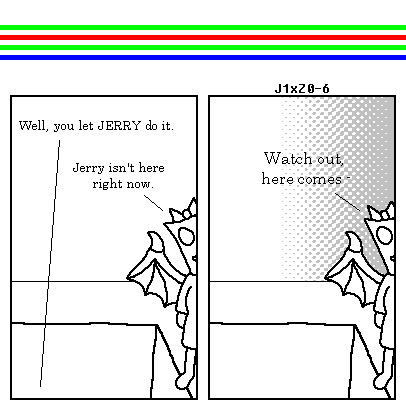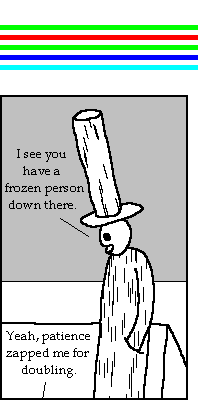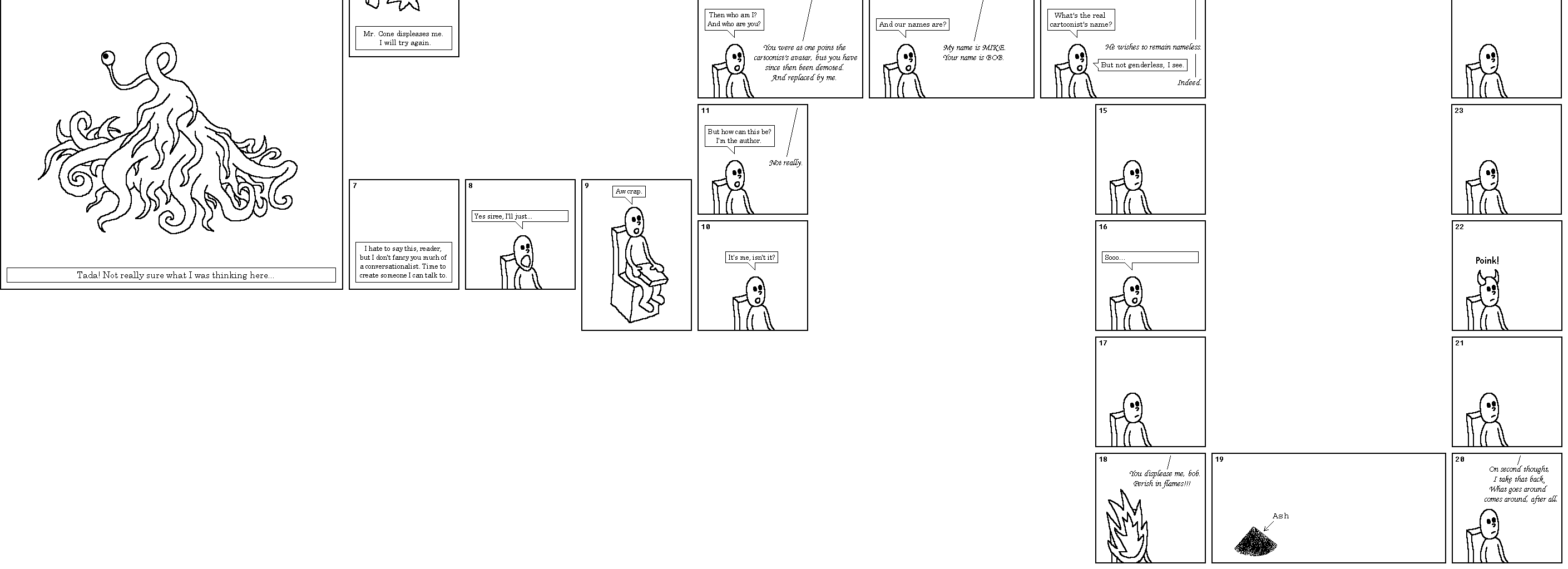













 By Jack Masters and a complicated system of tables A rusty broken pipe emerges crookedly from the floor of a small concrete room. Moss hangs in sheets from the irregular gaps between the tops of the walls and the ceiling. These objects wait in darkness for the sound of human activity. But no sound ever comes, not even the sound of dripping water. Eventually there is wind, but wind too weak to produce even the smallest observable sound. It is by no means the only patch of silence in this world, nor the most poetic, and arguably not the most important, either. Far above the concrete room is a pillar of rock rising out of a sea of asphalt. Patched with moss and tiny green vines, it surveys the barren plains and unbroken horizon. But the pipe and the moss must listen, for they have no horizon for which to wait for something to emerge, like an octopus through the slot in a suggestion box, bearing the frost of winter in it's suction-cup-lined clutches. And indeed, from that horizon eventually emerges a form. A great shapeless mass, larger then a mountain but lighter then a feather. As the clouds sweep across the plains of asphalt, time takes on a new meaning. Or perhaps an old meaning, resurrected after lying dormant, paralyzed by processes time itself was instrumental in the execution of. The clouds make no sound either, nor do they precipitate on the pillar or it's surroundings. They move past in a huge, unending train. Unlike a train, the path that it cuts moves erratically across the sky, first to the left, then to the right, finally covering the whole sky and dropping down to smother the ground as well in a thick, impenetrable fog. Now the pillar must listen as well, for the horizon has been demolished, destroyed, and only an edgeless fence of opacity remains. This isn't nearly as depressing as it sounds, as there is literally no one around to be depressed. However, by alluding to the imagined motives and desires of notable inanimate objects, a general sense of atmosphere is hoped to be created that the reader (assuming the existence of a reader) will likely find compromised, if not altogether punctured, by tangential asides such as this one. The water vapor now present provides nourishment to the plant life clinging to the pillar, and slowly tendrils snake their way out across the asphalt, as if to bring back news of the silent world beyond. One of the tendrils runs slightly less far then the others, but because of the peculiar way they all grow in different directions it is the only one to reach a narrow, uneven crack in the ground. However, it changes course barely a quarter of an inch from the tiny chasm, seemingly out of an intent to avoid it but actually because it just kind of grew that way. In any case, the lack of sunlight eventually kills the whole plant and nothing ever comes of it. Approximately nineteen and a half hours after all the plants are dead, it begins to rain. The rain slowly subsides, however, being replaced with faraway thunder in all directions. Occasionally patches of the fog are illuminated by nearby lightning. The temperature drops below zero and ice crystals form and collect in various places through various means, including snow. There sits the rocky pillar, enshrouded in snow, covered by fog, embedded in silence and yet on some conceptual level, resisting the silence, in a way it does not resist the fog and the snow. It resists by way of being an anomaly. And yet on a deeper level, it is the asphalt that is out of place in this vacant world, the silence hanging over it with a terrible uneasiness that the fog lacks entirely. The fact that it is currently covered in snow would make little difference to those aware of its presence, would that there were any. The unfreezing and refreezing of snow in the narrow uneven crack mentioned earlier eventually exerts just enough pressure to trigger a long building earthquake, which makes a rather subdued impact, seeing as with the exception of the rock pillar, there is nothing to knock down or otherwise cause damage to. As it happens, the earthquake opens a great crumbling crevasse, into which the rock pillar and its rather bleak immediate surroundings plummet, down through layers of strata, down between the two halves of the now split-open concrete room, and down into the black unknown, probably never to be seen again. One side of the concrete room contains the crooked rusty pipe and most of the moss; the other side contains the doorway to the tunnel, although the tunnel is now partially caved in by the earthquake. Fog drifts down into the chasm continually, but never seems to accumulate. Over time the temperature changes again and the melting snow makes small waterfalls down the walls, one of which would have gone down the rusty pipe if not for the slight protuberance of rock directly above it. Then the snow is all gone, and only the fog remains, until that too is blown away by a loud wind from the north, or possibly the west. In any case, the wind does not venture far enough down into the chasm to come into contact with either half of the concrete room or its inhabitants. Some time later, another train of clouds appears, but it is several miles away from the crevasse and does nothing but add to the sunset, which, still being far below the surface of the earth, the corroded pipe and the moss are unable to enjoy. A small landslide forms, five and a half feet away and two feet above the half of the room with the pipe and the moss. Once all the rocks have come to rest or fallen down into the abyss, it leaves the wall slightly more concave in that area, although not remarkably so. Then nothing happens for a very long time. This would be regarded as boring were there anyone around who could experience boredom. Then something truly strange begins to happen: slowly the sky begins to change colors. First red, then green, then a kind of yellow tinted purple, and so on. The center of the color changes lies on the same point on the horizon that the clouds originated, although from the vantage point of the divided room this is not evident. It is not completely silent, either. With the colors comes a faint high pitched buzzing noise. It sounds vaguely electrical, and changes pitch and volume slightly from time to time. Unlike the colors in the sky, it would be very difficult for even an observer on the surface to ascertain its source. They might even decide it comes from the rusty pipe, although this is wrong. After exactly one day and three quarters of a minute, it becomes very loud for a second, then disappears completely. |




